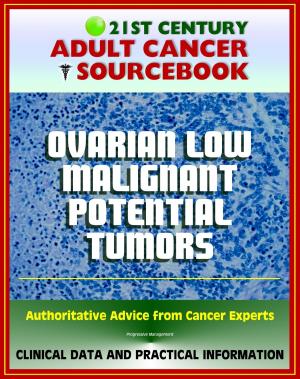Nanoscience and Nanotechnology: Air Force Research Laboratory (AFRL) Nanoscience Technologies Applications, Transitions and Innovations - Nanostrands, Optical, Transistors
Nonfiction, Science & Nature, Technology, Nanotechnology| Author: | Progressive Management | ISBN: | 9781301667925 |
| Publisher: | Progressive Management | Publication: | May 5, 2013 |
| Imprint: | Smashwords Edition | Language: | English |
| Author: | Progressive Management |
| ISBN: | 9781301667925 |
| Publisher: | Progressive Management |
| Publication: | May 5, 2013 |
| Imprint: | Smashwords Edition |
| Language: | English |
In a speech at the California Institute of Technology on December 29, 1959, Richard Feynman invited scientists to enter a new field of physics enabled by the atom-by-atom manipulation of matter. His talk, "There's Plenty of Room at the Bottom", inspired the new field of nanoscience and technology, from which he envisioned an enormous number of practical applications in computing, information technology, biology, and mechanical systems. Almost fifty years after Feynman's talk, nanotechnology is now responsible for many new products and capabilities, not only in the areas discussed by Feynman, but also in health care, communications electronics, textiles, automotive and recreational industries.
While a great deal of practical benefit has already been achieved from nanotechnology applications, there are many more opportunities in areas not even imagined earlier. Significant worldwide efforts are motivated by these opportunities, and are viewed to be essential to national prosperity and defense. The United States has long been a nanotechnology leader, with strong activities in the commercial, industrial, energy and defense sectors. The Air Force Research Laboratory (AFRL) is the world's pre-eminent laboratory for air, space and cyber technologies, and has a strong history of discovery and leadership in nanotechnology. Focused on satisfying important Air Force needs, nanotechnology innovations from AFRL have resulted in important transitions and warfighting capabilities.
The purpose of this document is to introduce the AFRL nanoscience and nanotechnology enterprise by outlining the broad areas of strategic investment and briefly describing the way that AFRL defines, integrates and conducts its expansive nanoscience and technology effort. Specific successes are given where results from these efforts have made an important difference for the Air Force, and where they may do so in the future. Twenty-four nanoscience and technology successes are selected that include warfighting capabilities currently used in the field, technology transitions being validated in systems-level testing, and scientific discoveries that may help change the way the Air Force defends America in the future.
Introduction * What is Nanotechnology and Nanoscience? * Nanotechnology at the Air Force Research Laboratory * The Air Force Research Laboratory Nanoscience and Technology Strategic Technology Team * Introduction to Air Force Research Laboratory Nanoscience and Nanotechnology Successes * Applications * Transitions * Innovations * The Environmental, Safety and Occupational Health of Nanomaterials at the Air Force Research Laboratory
In a speech at the California Institute of Technology on December 29, 1959, Richard Feynman invited scientists to enter a new field of physics enabled by the atom-by-atom manipulation of matter. His talk, "There's Plenty of Room at the Bottom", inspired the new field of nanoscience and technology, from which he envisioned an enormous number of practical applications in computing, information technology, biology, and mechanical systems. Almost fifty years after Feynman's talk, nanotechnology is now responsible for many new products and capabilities, not only in the areas discussed by Feynman, but also in health care, communications electronics, textiles, automotive and recreational industries.
While a great deal of practical benefit has already been achieved from nanotechnology applications, there are many more opportunities in areas not even imagined earlier. Significant worldwide efforts are motivated by these opportunities, and are viewed to be essential to national prosperity and defense. The United States has long been a nanotechnology leader, with strong activities in the commercial, industrial, energy and defense sectors. The Air Force Research Laboratory (AFRL) is the world's pre-eminent laboratory for air, space and cyber technologies, and has a strong history of discovery and leadership in nanotechnology. Focused on satisfying important Air Force needs, nanotechnology innovations from AFRL have resulted in important transitions and warfighting capabilities.
The purpose of this document is to introduce the AFRL nanoscience and nanotechnology enterprise by outlining the broad areas of strategic investment and briefly describing the way that AFRL defines, integrates and conducts its expansive nanoscience and technology effort. Specific successes are given where results from these efforts have made an important difference for the Air Force, and where they may do so in the future. Twenty-four nanoscience and technology successes are selected that include warfighting capabilities currently used in the field, technology transitions being validated in systems-level testing, and scientific discoveries that may help change the way the Air Force defends America in the future.
Introduction * What is Nanotechnology and Nanoscience? * Nanotechnology at the Air Force Research Laboratory * The Air Force Research Laboratory Nanoscience and Technology Strategic Technology Team * Introduction to Air Force Research Laboratory Nanoscience and Nanotechnology Successes * Applications * Transitions * Innovations * The Environmental, Safety and Occupational Health of Nanomaterials at the Air Force Research Laboratory















